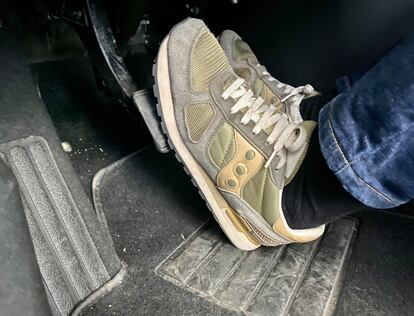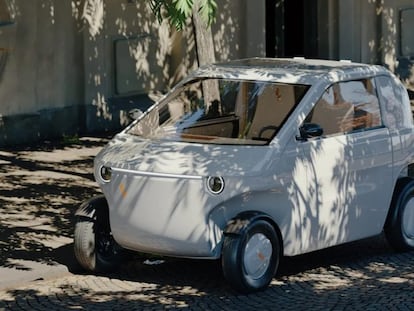Why you shouldn’t leave your hand on the gear stick when driving
Correct posture is essential for safe driving, but it is also necessary to avoid other bad habits behind the wheel

Before setting off, it is necessary for the driver to adjust the different settings available in his car to obtain a proper posture at the wheel. Driving safety depends to a great extent on this, and a suitable position will prevent excessive fatigue as the miles go by.
Among the basic safety tips, the first one is to adapt the different elements of the car such as the seat, the height of the steering wheel or the rear-view mirrors to the physical make-up of the driver.
But there is more, and once on the road, it is highly advisable to avoid certain practices that are acquired without being aware of it but that can compromise safety and may even end up damaging the mechanics of the vehicle.
Among the main mistakes that are often made unconsciously while driving are the bad habit of keeping the hand on the stick shift and also keeping the clutch pedal pressed unnecessarily. Two habits that motorists acquire without realizing it and that should be corrected.
Hand position at ten past ten
In the first case, the main reason to correct it is that the correct handling of the steering wheel requires keeping both hands on the upper part of its arc, specifically in the same ten past ten o’clock position, in order to adequately control the steering and be able to react safely to any unforeseen event on the road.
But, moreover, in cars with a manual gearbox, the gear stick is connected to the gear mechanism by means of a system of mechanical transmissions that act on the selector, responsible for activating the cogwheel corresponding to the gear chosen.
When the right hand rests on the lever, a continuous pressure is transmitted on the whole mechanism, which accelerates its deterioration, creating looseness that affects the operating precision and may even cause a breakdown in the long run.

Unnecessary wear and tear
On the other hand, keeping your foot on the clutch pedal unnecessarily is not advisable either. The reason for this is that it considerably accelerates the wear of this important component and unnecessarily raises the engine temperature.
For example, when the car is stopped at a traffic light, it is better to engage neutral and release the clutch. Keeping the clutch pressed down until the moment of starting the car subjects the system to an extra effort that shortens its life considerably.
And for example, when maneuvering when parking, driving in a garage or going up a ramp, it is better to do so by acting only on the accelerator and not causing the clutch to slip, which is not recommended and will also unnecessarily wear out this important mechanism.
Sign up for our weekly newsletter to get more English-language news coverage from EL PAÍS USA Edition
Tu suscripción se está usando en otro dispositivo
¿Quieres añadir otro usuario a tu suscripción?
Si continúas leyendo en este dispositivo, no se podrá leer en el otro.
FlechaTu suscripción se está usando en otro dispositivo y solo puedes acceder a EL PAÍS desde un dispositivo a la vez.
Si quieres compartir tu cuenta, cambia tu suscripción a la modalidad Premium, así podrás añadir otro usuario. Cada uno accederá con su propia cuenta de email, lo que os permitirá personalizar vuestra experiencia en EL PAÍS.
¿Tienes una suscripción de empresa? Accede aquí para contratar más cuentas.
En el caso de no saber quién está usando tu cuenta, te recomendamos cambiar tu contraseña aquí.
Si decides continuar compartiendo tu cuenta, este mensaje se mostrará en tu dispositivo y en el de la otra persona que está usando tu cuenta de forma indefinida, afectando a tu experiencia de lectura. Puedes consultar aquí los términos y condiciones de la suscripción digital.
More information
Últimas noticias
The open war against the oil ‘phantom fleet’
‘Sleepless City’: The light of cinema illuminates Madrid’s Cañada Real shantytown
Christmas loses its festive spirit: ICE fears cast shadow over religious celebrations
Russell Tovey: ‘I was advised many times not to come out, I don’t think there was many people who’d done that — and I feel really proud that I’m one of those that did’
Most viewed
- Families demand repatriation of bodies of Colombians who died in Ukraine: ‘This war is a slaughterhouse for foreigners’
- The low-cost creative revolution: How technology is making art accessible to everyone
- Liset Menéndez de la Prida, neuroscientist: ‘It’s not normal to constantly seek pleasure; it’s important to be bored, to be calm’
- Christian Louboutin: ‘Young people don’t want to be like their parents. And if their parents wear sneakers, they’re going to look for something else’
- ‘El Limones’ and the growing union disguise of Mexican organized crime










































